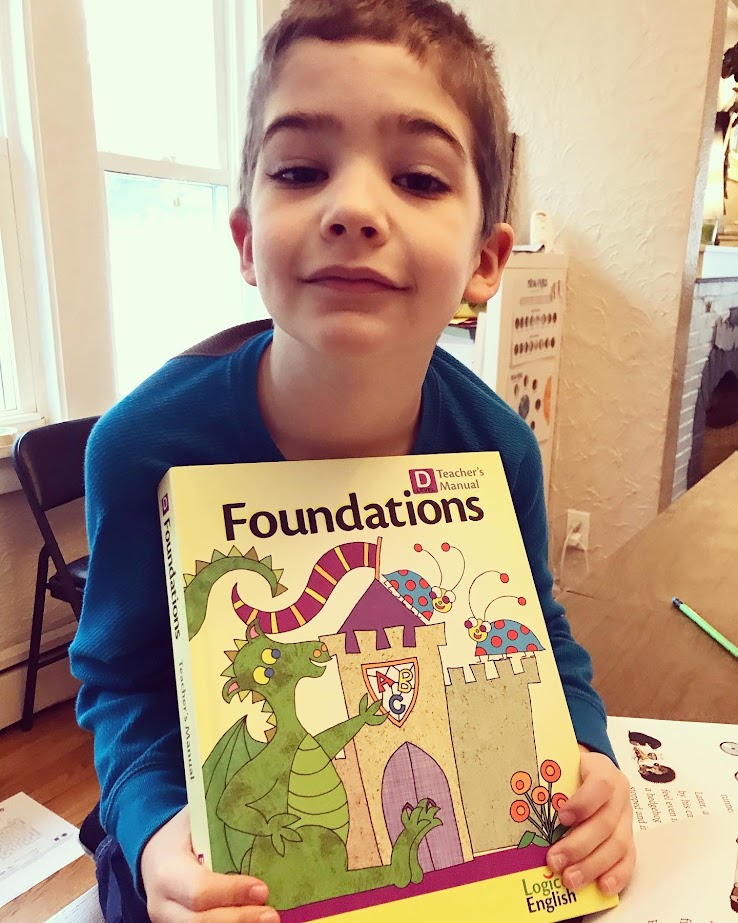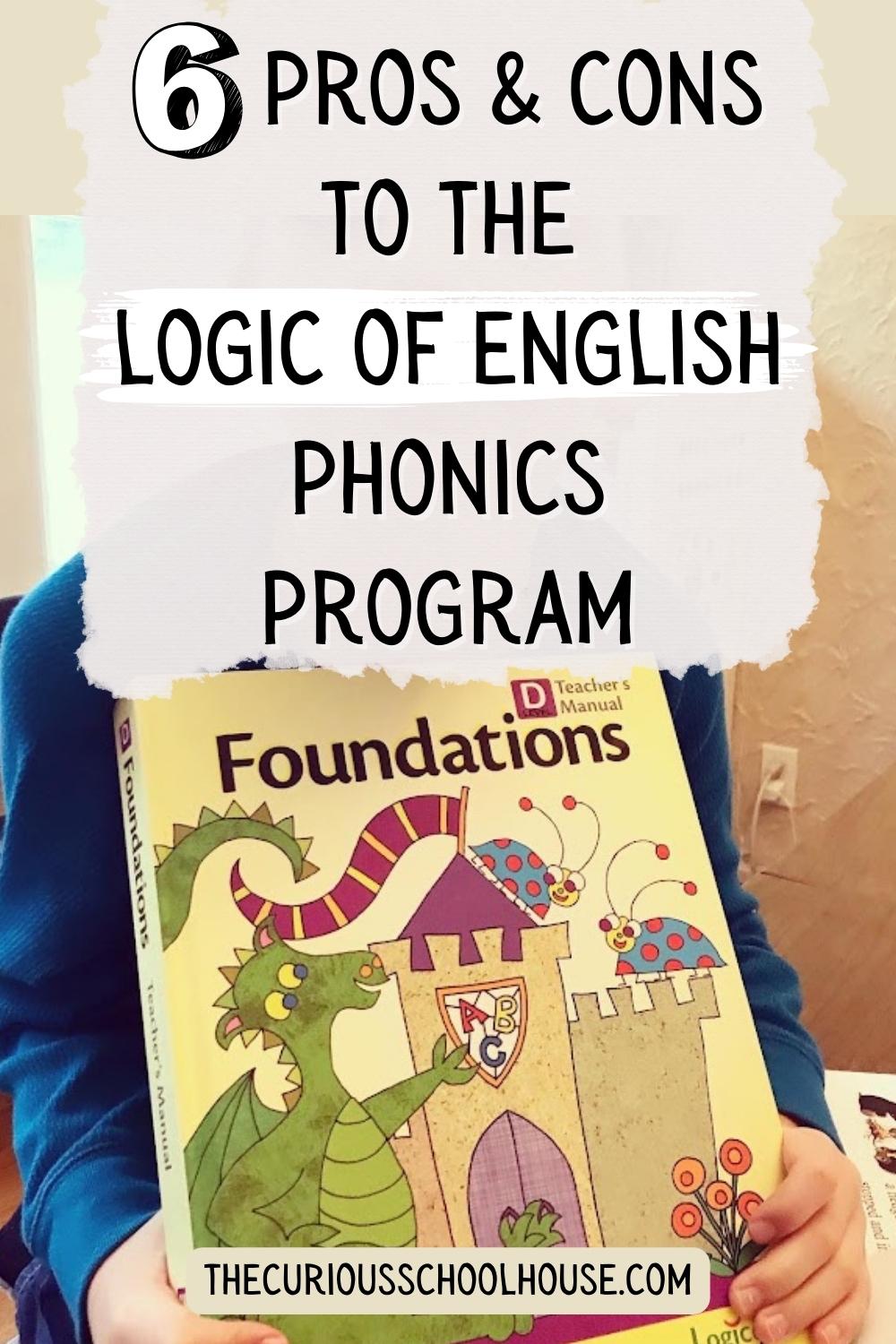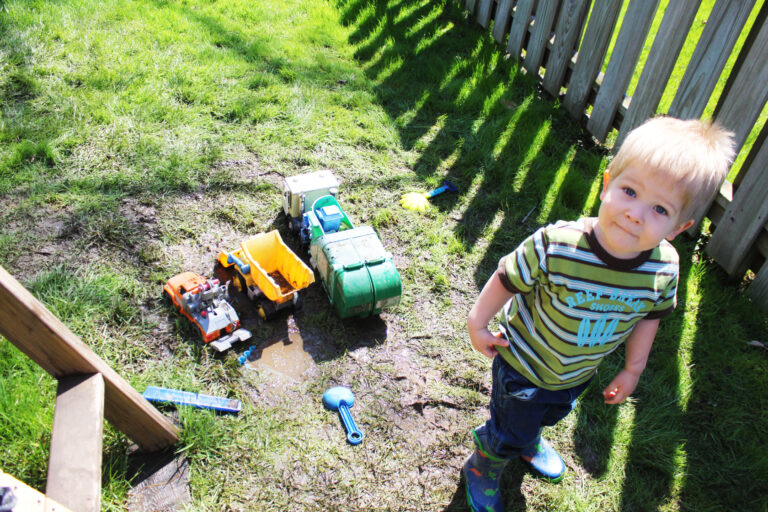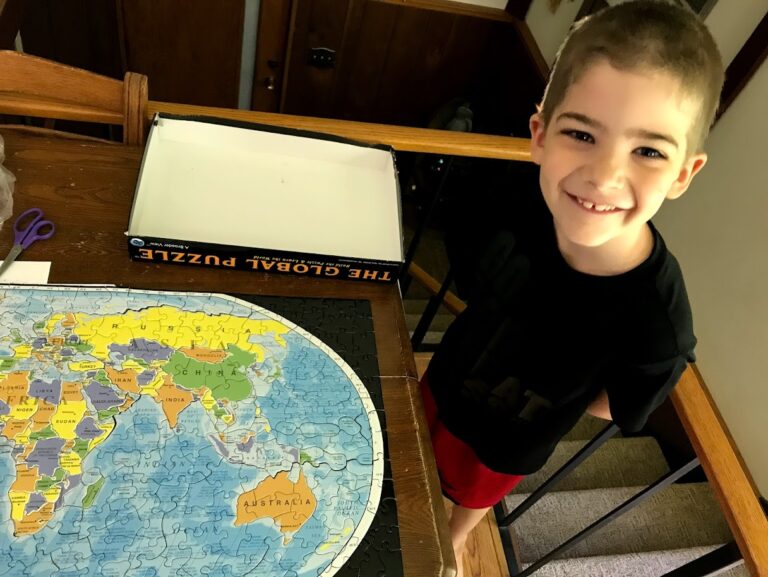Pros and Cons to the Logic of English Phonics Program
This post shares our experience with using the Logic of English phonics program during the past three years, as well as the pros and cons to this method. I will also share exactly how we use it in our homeschool. Find out if this curricula could be right for your family, or not!
We’ve tried many different programs and books since starting our homeschool life 2.5 years ago, and some we have liked while others have been discarded along the way. One subject that has stayed consistent, however, is our phonics program – Logic of English. I wanted to share some of the pros and cons of this curriculum, as well as how we make it work for our family, in case anyone else is considering using it! At this moment, Big Brother has finished all four levels (A-D), Middle Brother is in the middle of level C, and Little Brother is 3/4 of the way through level A.

Pros to Logic of English
It’s very thorough and yes, LOGICAL. One reason I chose this program initially was because I liked how much was included: the one book covers phonics, reading, spelling, handwriting, vocabulary, composition, and beginning grammar. It also helps to make sense of the English language, as there are rules and “phonograms” (groups of letters like “ph” or “dge” that make specific sounds) to explain almost every single English word and its spelling.
That in itself is impressive, for a language that is commonly referred to as “irregular” and difficult! If you’ve ever wondered things like, “Why does love have an E at the end?” or “Why do the two Cs in circus make different sounds?,” this book will give you the answers.
There are plenty of multi-sensory learning options. We don’t use every single one, but I like that it’s not just writing, or just a workbook. There are games and activities to go with the lessons and many that get the kids up and moving.
I like the quality of the pictures and the readers. Some of the readers are fiction, some non-fiction, and I feel like they are as good and interesting as readers of that level can be.
It’s easy to use. Most days I do zero prep, which is how I like it. It’s quite literally open-and-go, even with the teacher lines scripted in, in case you are not sure what to say or how to explain an idea.

Cons to Logic of English
It’s very thorough and logical. Yes, I also listed this as a pro. Here’s the thing: the more I have read about homeschooling philosophies and research on how children learn to read, the more skeptical I am that children really need all of those rules about the English language. As an example of one rule: “C always softens to ‘s’ when followed by E, I, or Y. Otherwise, C says ‘k.'”
This is intellectually interesting, perhaps for an adult who enjoys language study (and it explains my example of “circus” mentioned above), but I’d bet that 99% of reading adults never knew that rule and never needed to know it. Some kids and some adults might be helped by this knowledge – others would rather just be told that this word spells “circus.” Know your child!
Homeschool life is busy, and I don’t enjoy spending our precious time explaining a concept that feels irrelevant and superfluous. I strongly believe that an understanding of phonics is important for children to enable them to read more fluently and to “sound out” unfamiliar words – but it’s also possible to focus on it too much, to the exclusion of the joy of actually READING and recognizing familiar words – whether or not you know why they are spelled that way.
Check out Reading Magic by Mem Fox if you’re interested in more ideas about how children actually learn to read, and the proper place of phonics.
I have also seen this played out in real life as I have watched my two oldest transform into fluent readers. Each of them reached a point where reading suddenly “clicked” and became easy. For both of them, this point came at different ages and stages – but, surprisingly, it was well before they had learned all of the phonograms and rules in their curriculum. Suddenly, they were reading – with ease – many, many words that they had not yet learned how to “sound out” or how to explain their spelling.
In fact, Middle Brother (currently in level C) now finds the reading worksheets quite easy – the worksheets in level D would be more on par with his reading ability. How did his reading level suddenly jump ahead of his phonics level? Clearly, there is a large part of reading that is either based on recognizing familiar words by sight, or by internalizing general language patterns, or by making educated guesses based on the context. Phonics is not everything.
It’s got a LOT of activities packed into each lesson. I guess you could consider this as either a pro or a con. If you looked at the lesson and thought, wow, we have to do all of these things before we can move on, then it could easily be overwhelming. If you looked at the lesson and thought, wow, we have a lot of options here, let’s pick the ones that work best for us! – then it could be a good thing.
Spoiler alert: we don’t do it all, and you shouldn’t either.
How We Use It
We don’t do it all. We do not use every activity and worksheet in the book. Frankly, I do not teach every single spelling rule in the book either. I have taken the liberty of omitting some that I feel are too obscure to be worth our time. And guess what – I can do that, because the curriculum is our tool, not our boss. I believe that the people who wrote these books are very smart and had good reasons for what they did – but I also believe that I know much more about my children and our homeschool than they do.
I tailor it to the individual child. Big Brother has been, from the beginning, a naturally excellent speller. With him, I skipped most of the included spelling lists and practices, because they were much too easy and not worth our time. He seems to have the sort of mind where, most of the time, he can see a word once and remember the spelling forever. Middle Brother, on the other hand, is a normal, average speller – he does okay, but needs more practice and reinforcement. It’s been easy enough to add in more spelling practice and explanations for him as he works through the program.
We don’t do handwriting at the beginning. We have started level A with each boy soon after they turned four, and for all three of them, they have not had the coordination or strength at that age to hold a pencil well or form their letters. Maybe Baby Sister will be different – we shall see! But because they all knew their letters by that age, and were eager to begin the process of reading, we started the program anyway and just skipped (or did very few of ) the handwriting sections.
Little Brother is three months away from turning 5 and we still have not done any handwriting work with him. Again – the curriculum is our tool, not our boss! (This is true no matter which curriculum you may have picked). As they have gotten older and more coordinated, we’ve added in handwriting work and it hasn’t seemed to be a big problem.
We take breaks as needed. Sometimes I get the feeling that a child needs less phonics and more actual reading, so we will take a break from the curriculum and just focus on reading some readers or chapter books at their level instead. Their favorite way to do this is for us to trade off pages – he reads a page, then I read a page. This way a long book with “lots of words” isn’t nearly so intimidating.
There you have it – an overly-lengthy explanation how we’ve taken a very good resource and adapted it for our family! If you need it, consider this your reminder for today that you have permission to change or omit parts of your curriculum in order for it to better serve your family. Your children will thank you!
Originally written February 28 2021








Very thorough review! Thank you for the reminder to make the curriculum work for us and feel free to modify as needed. I am considering logic of English for my daughter because she is struggling so much with reading. Where as it seemed to come more naturally for my son. Looking through this curriculum, I thought, while it seems thorough, it also seems like a lot to do in each lesson. Thank you for sharing how you have made it work for you.
you’re very welcome! Yes, it is a lot sometimes, but you definitely don’t have to do it all 🙂 every curriculum should simply be a tool to help us, not our master!